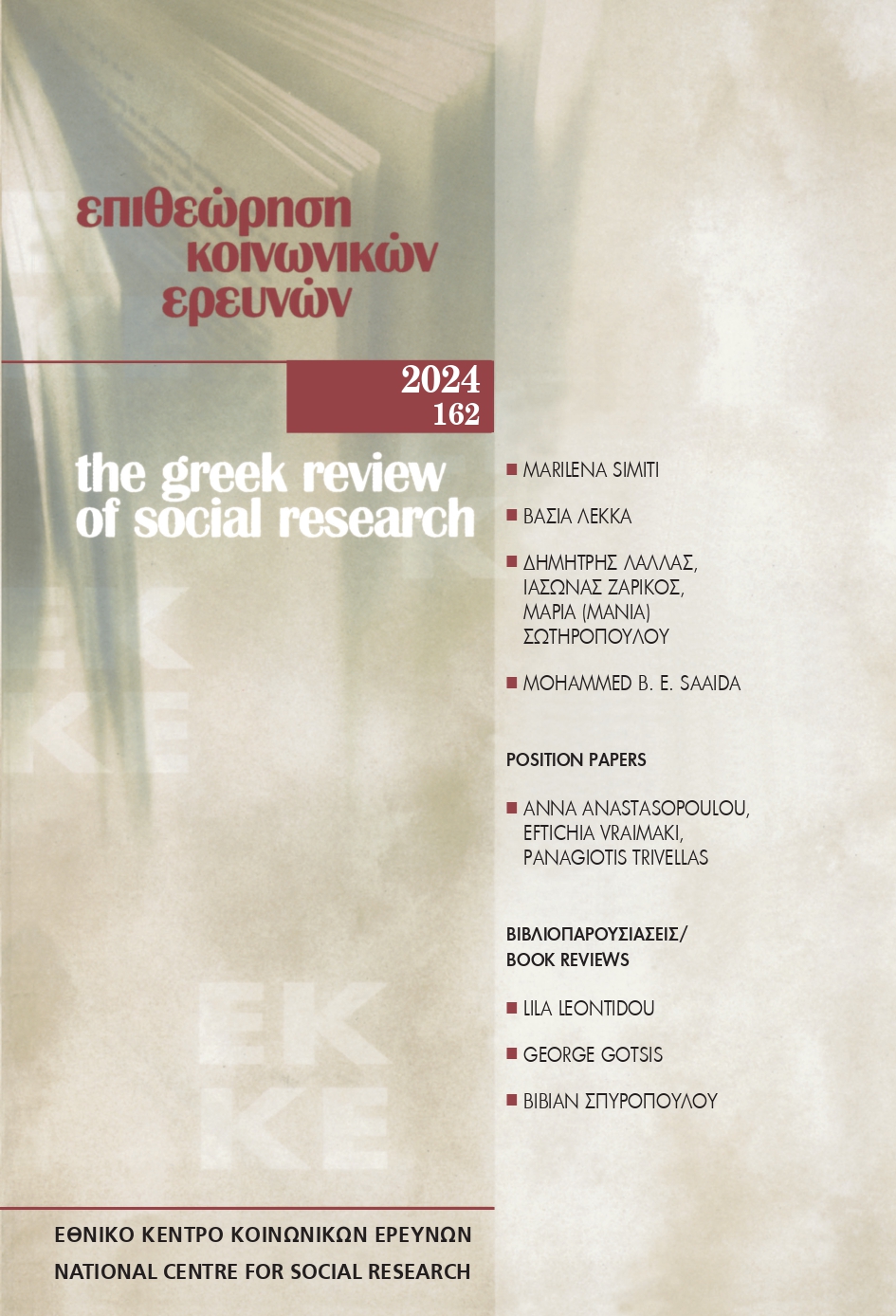Disengaging from political activism: A critical review of the literature

Abstract
The literature on political disengagement has proliferated since the global upsurge of mobilizations in late 2010. Studies show that disengagement is a highly dynamic process, shaped by the interaction of a multiplicity of factors at the micro-, meso- and macro-levels. The article reviews the principal factors related to disengagement, revealing their varied impact, the significance of agential factors and the context-specific nature of disengagement. Given the different forms and degrees of disengagement, scholars have begun to challenge strictly defined dichotomies such as engagement/disengagement. The article concludes by noting some blind spots in the literature and providing suggestions for future research.
Article Details
- How to Cite
-
Simiti, M. (2024). Disengaging from political activism: A critical review of the literature. The Greek Review of Social Research, 162, 3–28. https://doi.org/10.12681/grsr.36638
- Issue
- 2024: 162
- Section
- Articles

This work is licensed under a Creative Commons Attribution-NonCommercial 4.0 International License.
Authors who publish with this journal agree to the following terms:
- Authors retain copyright and grant the journal right of first publication with the work simultaneously licensed under a Creative Commons Attribution Non-Commercial License that allows others to share the work with an acknowledgement of the work's authorship and initial publication in this journal.
- Authors are able to enter into separate, additional contractual arrangements for the non-exclusive distribution of the journal's published version of the work (e.g. post it to an institutional repository or publish it in a book), with an acknowledgement of its initial publication in this journal.
- Authors are permitted and encouraged to post their work online (preferably in institutional repositories or on their website) prior to and during the submission process, as it can lead to productive exchanges, as well as earlier and greater citation of published work (See The Effect of Open Access).


